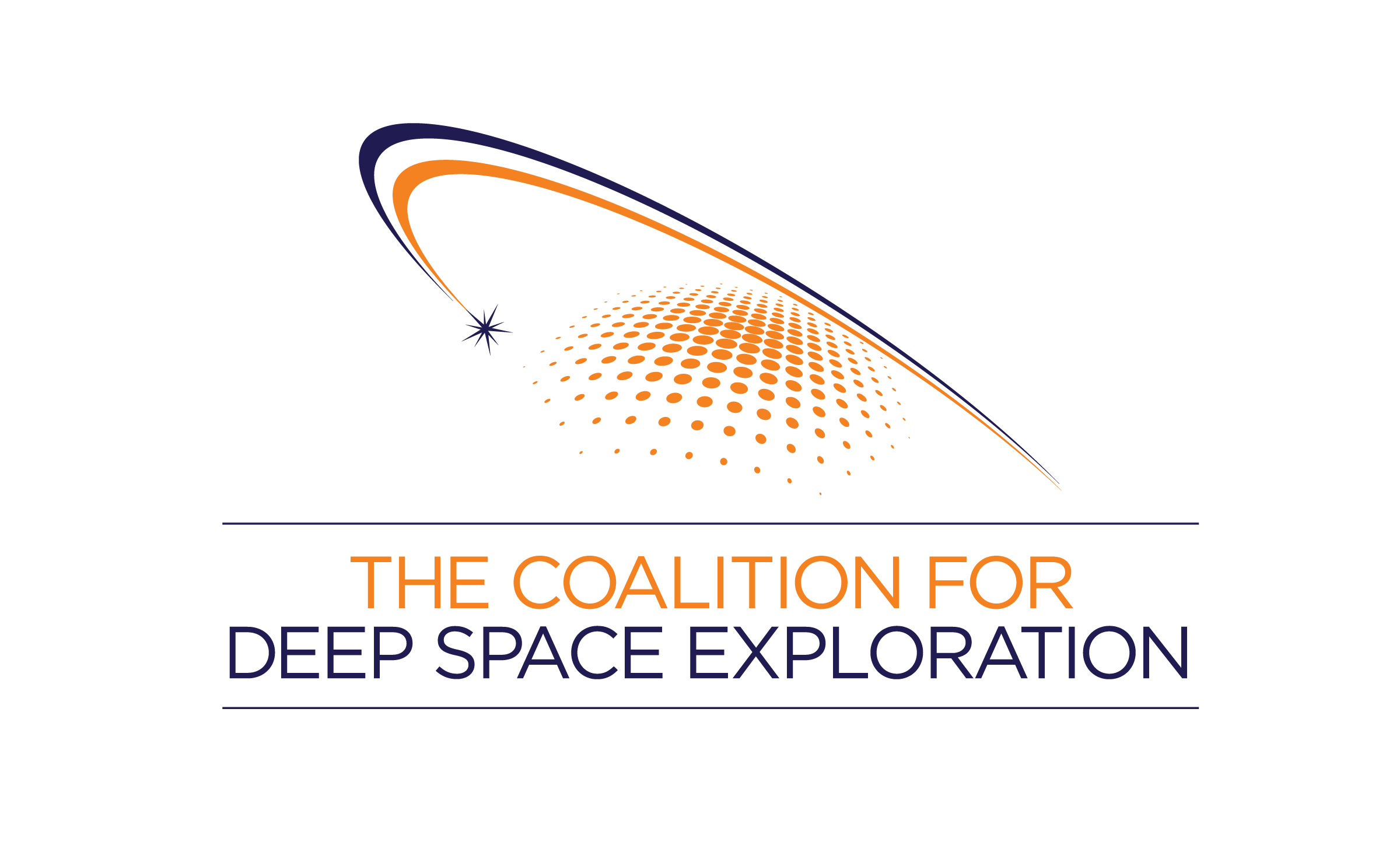“A Space Exploration Roadmap for the Next Administration” outlines the Coalition’s position on key space policy issues
The Coalition for Deep Space Exploration has released a policy position paper highlighting the key issues that every presidential and congressional candidate should understand in order to ensure that deep space exploration remains a bipartisan priority over the next several years. The Coalition is the voice of America’s deep space industry, with over 40 corporate members supporting NASA’s deep space human exploration and science programs. The full paper, entitled “A Space Exploration Roadmap for the Next Administration,” is available for download here.
“Human exploration and science in deep space are expressions of the fundamental human need to learn and grow. They are representative of the leadership, technical achievement, and national aspirations that mark U.S. presence on the global stage, and are key to our continued progress and prosperity as a nation. Competition among other space-faring nations is growing, and in the next 10 years, additional countries will more than likely demonstrate advances in deep space technologies for space access, space science and human spaceflight,” said Mary Lynne Dittmar, Ph.D., executive director of the Coalition. “We must assure U.S. access to deep space and to low Earth orbit to uphold our country’s national security, scientific progress, technical infrastructure and economy. This paper articulates the Coalition’s position on key policy issues. It is designed help the next presidential Administration and Congress understand the benefits and justifications for continued U.S. leadership in space, and makes recommendations to ensure national leadership and bipartisan support for the human exploration of deep space and space science.”
In order to maintain U.S. space leadership, the Coalition made seven key recommendations. Highlights include:
- Develop and maintain close alignment between the new Administration and Congress on space policy, priorities and funding levels – Open exchange, collaboration and agreement between the Administration and Congress create the most conducive environment to plan and execute deep space programs, especially to maintain and strengthen bipartisan support NASA’s deep space human exploration and science missions. It also accelerates schedules and eliminates highly inefficient program re-planning.
- Ensure robust and dependable U.S. access to deep space for all future missions – Space utilization is necessary to enable such things as commerce, communication and national security. This requires continued U.S. access to space including full development of NASA’s new super heavy exploration rocket, the Space Launch System, exploration spacecraft Orion, and deep space habitat systems currently under development to explore deep space, as well as full operation of cargo and crew transportation to low-Earth orbit.
- Advance U.S. leadership and achievement in space science – American space science programs in heliophysics, planetary science, atmospheric science and astrophysics exemplify the nation’s leadership in space. Robust funding of space science programs such as the Mars Curiosity Rover, the James Webb telescope, the Mars 2020 mission and more will spark technology development, deepen U.S. engagement with the international science community and advance human knowledge and discovery.
- Ensure utilization of the International Space Station (ISS) as a technology testbed and the cornerstone of NASA’s comprehensive plan for future space exploration – Exciting microgravity research conducted daily at the ISS National Laboratory is leading to discoveries that improve life on Earth and help to jump start the economic development of low Earth orbit. The ISS is currently set to operate through 2024, but may be operable to 2028. The recent “Year in Space” mission with astronaut Scott Kelly demonstrates the exceptional capability the ISS offers the U.S. for preparation for upcoming deep space missions.
- Focus new transportation services on supporting NASA’s low-Earth orbit activities and missions without sacrificing safety and mission assurance – NASA’s crew and cargo transportation service programs have successfully delivered cargo to the ISS, helping to reduce overall costs and create new commercial space markets in low-Earth orbit. These programs should allow the government to assume the role of “smart buyer.” Technology efforts should remain focused on improving performance, reliability and cadence to support private investment in and development of low-Earth orbit capabilities, goods and services.
- Strengthen NASA’s effectiveness by streamlining the institutional footprint, bureaucracy and procurement practices to ensure the effective deployment of existing resources – NASA needs a full assessment of its operations to identify inefficiencies and obsolescence in order to free up additional resources that can be reinvested in NASA’s core human and science missions to help offset rising costs and inflation. In addition, NASA’s facilities and infrastructure should be evaluated against specific, upcoming mission needs to minimize future program overhead.
- Ensure development of new technologies and space capabilities which directly support science, exploration and national security needs – Government agencies responsible for space activities (i.e., NASA, NOAA, FAA, USGS and DoD) should increase cooperation to identify and prioritize common technology and capabilities needed for future space missions. In addition, NASA’s human exploration, science, space technology and aeronautics programs should increase collaboration to create multidimensional missions that address both exploration and scientific interests.
The paper also presents strong justifications for continued investment in space exploration programs, including: technical leadership; greater advances in space science; preserving the national space industrial base; market development and greater private sector investment in space; international leadership; and national aspiration and achievement.
Dittmar explained that in addition to the presidential campaigns, this paper will be of interest to key stakeholders in Congress who are looking ahead to the start of the NASA’s SLS/Orion Exploration Missions and science missions such as the James Webb Space Telescope and the Insight mission to Mars, all of which are scheduled for launch in 2018, as well as the other human and science exploration missions to follow. Portions of the paper were also introduced last month at The Humans to Mars Summit. In addition, representatives from three Coalition companies – Lockheed Martin, Boeing, and Orbital ATK – testified before the House Space Science and Technology Committee’s Space Subcommittee about Deep Space Habitats as the “Next Step to Mars,” using elements of the paper.

